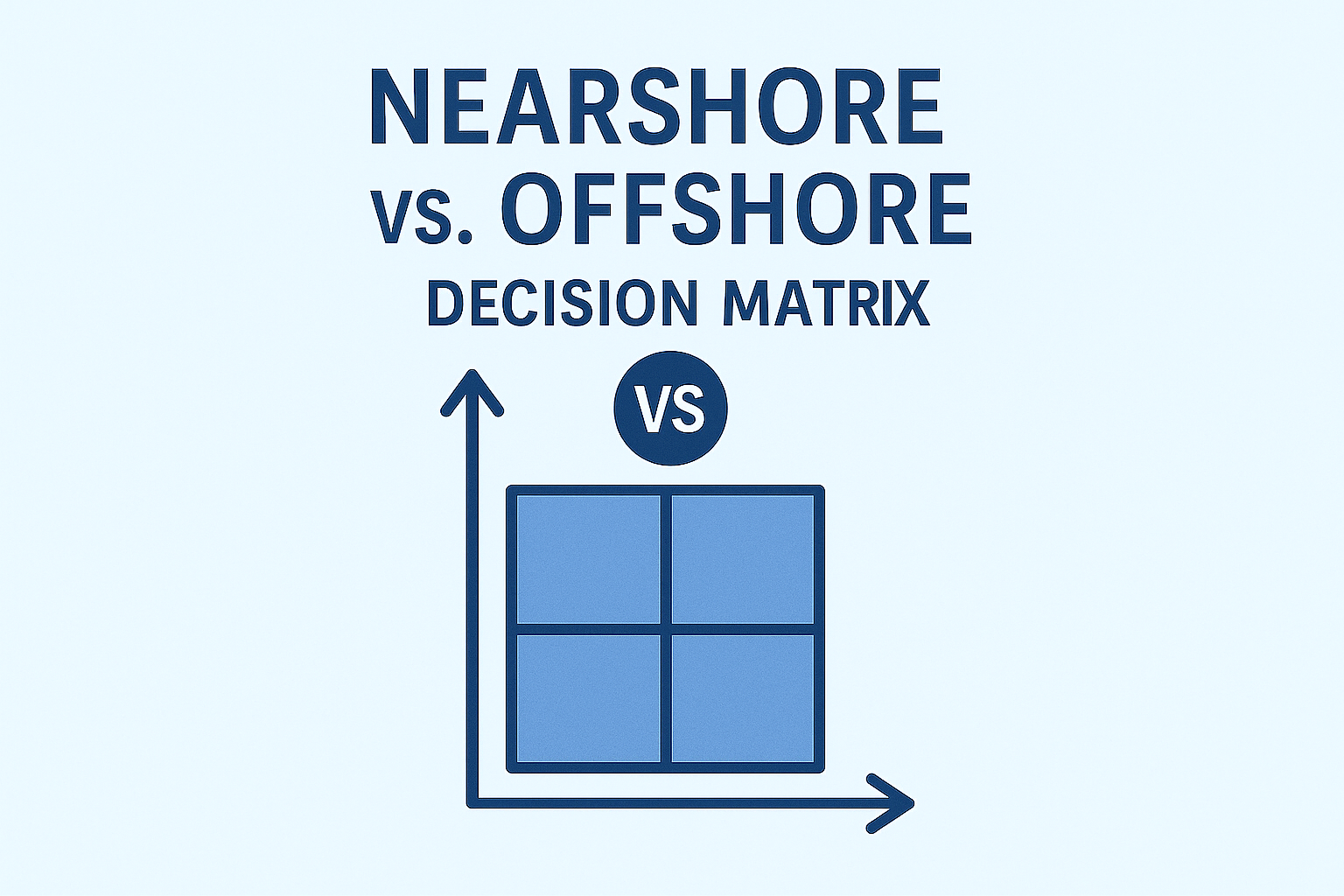Choosing the right outsourcing model isn’t about buzzwords. It’s about what your business truly needs.
The Strategic Importance of Choosing Right
As software teams scale and global operations become the norm, companies are constantly faced with a critical question: Should we go offshore or nearshore with our development needs? This isn’t just a cost decision—it’s a strategic one that impacts delivery speed, collaboration, quality, and long-term success.
Both models come with benefits and trade-offs. A clear decision matrix helps organizations make informed choices based on actual needs, not assumptions or trends.
Definitions at a Glance
Offshore Development: Teams are located in distant countries, often with significant time zone Popular offshore locations include India, Philippines, and Eastern Europe.
Nearshore Development: Teams are situated in neighboring or nearby countries, usually with similar time zones. For U.S. companies, this might mean Latin America or Canada.
Decision Matrix — Key Factors to Compare
| Factor | Nearshore | Offshore |
| Time Zone Alignment | High (Real-time collaboration) | Low to Moderate (Async workflows) |
| Cost Efficiency | Moderate | High |
| Cultural Affinity | Stronger (Similar work culture) | Varies significantly |
| Language Fluency | Often fluent (especially regional) | Generally fluent but accents vary |
| Talent Pool Access | Good but smaller | Large and specialized |
| Travel Accessibility | Easier (shorter trips) | Longer and costlier |
| Factor | Nearshore | Offshore |
| Security & Compliance | Easier to manage | Requires stricter oversight |
| Scalability | Moderate | High (larger vendor networks) |
| IP Protection | Stronger in regulated regions | Varies by country |
When to Choose Nearshore
Your project needs tight collaboration, with frequent real-time
You prefer easier travel for occasional onsite
You operate in high-compliance industries like finance or healthcare, where regulatory alignment matters.
You need rapid ramp-up with minimal cultural
Example:
A U.S. fintech firm building a high-security mobile app may choose a partner in Mexico or Colombia to stay compliant with regional data protection laws and ease communication.
When Offshore Makes More Sense
You’re looking for maximum cost efficiency and have clearly defined project scopes.
Your internal team is mature in agile practices and can handle asynchronous workflows.
You need access to a large pool of specialized developers (e.g., AI, blockchain, embedded systems).
You’re building long-term product teams that will evolve over time.
Example:
A startup building a SaaS platform may work with a team in India for full-stack development, given the lower cost and availability of diverse talent.
Making the Decision
Use a weighted decision matrix based on your priorities. Assign a weight (e.g., 1–5) to each of the above factors based on its importance to your project. Then score Nearshore vs. Offshore under each category to identify your ideal match.
Conclusion
There’s no one-size-fits-all. What matters is alignment—with your business goals, team maturity, and operational constraints. Some companies even take a hybrid approach: nearshore for real-time work, offshore for round-the-clock development.
The best model is the one that lets your team move faster, collaborate better, and scale smarter.





